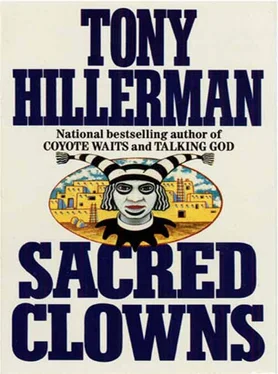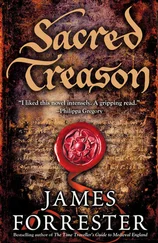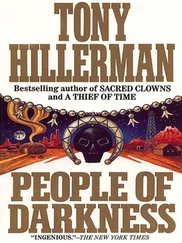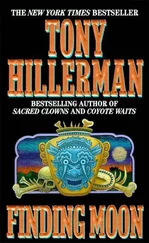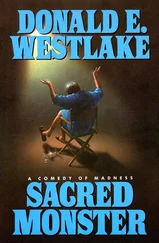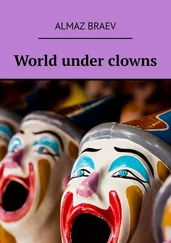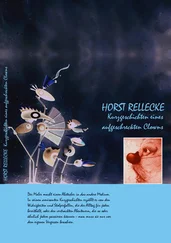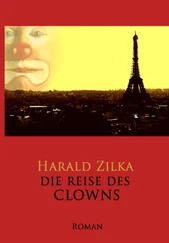“So that broke with tradition? I mean putting the cane in the wagon?”
Sayesva nodded. “Everybody’s been talking about it. Maybe as much about that as about what happened to my brother. Francis was a valuable man. He didn’t do foolish things. People wonder what he was telling them.”
“If your brother didn’t have that cane made, do you have any idea who might have done it?”
Sayesva thought, shook his head. “No idea.”
They sat, with Teddy Sayesva considering what he now knew along with what he had known before – considering how a cane taken from a murdered man’s shop came to be made part of the symbolic cargo of a clown’s toy wagon. Leaphorn was content to give him time. He let his eyes wander.
Sayesva’s kitchen was the kitchen of a man who lived alone. Leaphorn saw the same untidy clues he saw in his house since Emma’s death, the grimy stove, the cluttered sink, the unkempt shelves. He saw the sad look of loneliness.
“I talked to Henry Agoyo,” Sayesva said, finally. “Henry is the chief clown – the one in charge of the team that does the skit.” Sayesva hesitated, looked at Leaphorn, made a wry face, and continued. “I’m talking too much. About things we don’t talk about. But something very strange has happened here. I think we should try to understand it. I talked to Henry. I asked him what he knew about putting the cane in the wagon. Why in the world did they do that? He said it wasn’t planned that way. He said Francis brought it to him that morning – just a little while before the ceremonial started. He said Francis told him to put it in the wagon, and he didn’t want to do it. But he said Francis seemed very upset. Disturbed. He said put it in and Henry said, ‘Do you know what you’re doing,’ or something like that, and Francis said he wasn’t sure, and maybe he was wrong, and he hoped he was wrong, but to put the cane in the wagon.”
Sayesva picked up his coffee cup, saw it was empty, put it down again. “Henry knew my brother real well,” Sayesva said. “They were in the same class in school and they both drove trucks at the Jacks Wild Mine, before Francis went to the university to become an accountant.”
“What does Agoyo do now?” Leaphorn asked.
“He runs a road grader for the county.”
“He said Francis hoped he was wrong,” Leaphorn repeated.
Sayesva nodded.
“Anything else? Could he tell you where the cane is now? What happened to it after the ceremonial?”
“He said Francis came when the clowns left the plaza and said he had to have the cane, and took it out of the wagon.”
Leaphorn connected his memory of what Chee had described with this new fact. There had been very little time between the end of the clowning skit and the death of Francis Sayesva in the room where he had gone to remove his costume. Only the few minutes Chee had spent running around looking for Delmar. Francis must have had the cane with him when he was killed.
He thought: Find the cane, find the killer .
“So putting the cane in the wagon was a last-second addition,” Leaphorn said. “They hadn’t planned it that way.”
“That’s what Henry Agoyo told me.”
“You think probably your brother didn’t know about the cane until Delmar brought it to him?”
“That’s what I think,” Sayesva said.
“So what was that shop teacher’s motive for making it?” Leaphorn asked, as much to himself as to Sayesva. “And why was the shop teacher killed?”
Neither of them could think of an answer.
NOR COULD Bert Penitewa, the governor of Tano Pueblo.
Leaphorn had walked from Sayesva’s house, across the plaza and around a corner and down a narrow street walled with adobe houses. As Sayesva had told him, the governor’s home was the third on the left.
A middle-aged woman answered the door, with a jacket on and a shawl over her head. Yes, Governor Penitewa was home. She was his daughter and she had to run to see about something a neighbor had asked her to do. But she ushered him in, invited him to sit on the sagging sofa, called her father, and left.
The governor of Tano Pueblo was a short, heavy-bodied man, probably in his late seventies. But like many of his race, he didn’t show his age. His hair was thick and black, his face hardly lined, and while his belly bulged over the belt of his jeans, his back still resisted the slump of the aged.
“I’m sorry Della had to leave in such a hurry,” he said. “She makes much better coffee than I do and I want to offer you a cup.”
“I’m afraid I’ve already had my quota for the day,” Leaphorn said.
Penitewa gestured him back onto the sagging sofa by the front window and seated himself behind a table that seemed to also serve as his desk. Behind the desk, Leaphorn could see into the bedroom from which the governor had emerged. To his left, a doorway opened into the kitchen. To his right, he could see into what seemed to be another bedroom. This living room was small, crowded with worn furnishings, its plank floor covered with a good Navajo rug, its walls decorated with photographs and a framed print of Christ crucified. Beside the kitchen door a shelf held three kachina figures, a seed basket, two good examples of Acoma pottery, and a plastic clock made to represent a coyote howling. On the wall behind the table where Penitewa sat, two canes hung side by side. One was made of a light wood with a head of heavy ornate silver tied with a black cord and dangling a black tassel. The other was a simple ebony stick with a round silver head. The Lincoln Cane.
“How about iced tea? I should offer you something,” Penitewa said. “I presume this is an official visit from a representative of the Navajo Nation. That hasn’t happened at this pueblo for many, many years.”
Leaphorn wasn’t quite sure how that remark was intended. As he remembered history, Tano had been hostile to the Navajos during what Frank Sam Nakai called “the Kit Carson wars.” But then, just about all the Pueblos had joined the Americans in that campaign. Only Jemez Pueblo had remained forever friendly.
“I think the best we could call this visit is semiofficial,” Leaphorn said. “We had a teacher killed on our reservation a little while ago.” He explained the evidence that the victim had made a copy of the Tano Lincoln Cane, that a Navajo suspected of the homicide was in custody, and that Delmar Kanitewa had apparently brought the cane to Tano and had given it to Francis Sayesva, and that it had subsequently been taken when Sayesva was killed.
Penitewa listened in silence, motionless, face impassive. But his eyes betrayed surprise and interest.
“So, that’s it,” he said. “I wondered where it came from.”
“Apparently, that’s it,” Leaphorn said. “The evidence is circumstantial. But it’s strong. We found shavings of what looks like ebony wood in the teacher’s shop, and what seemed to be a mold to cast the silver head. The Kanitewa boy was there at the right time. He brought a package of the proper shape and gave it to Francis Sayesva. But, of course, we haven’t actually had our hands on it.”
“I saw it in the wagon,” Penitewa said. “It was quite a shock. At first I thought it was the real one. I thought someone had come in here and got it down off the wall.”
“Could that have happened?”
Governor Penitewa smiled at him. “It could have, but it didn’t. I came right home to look and it was still on the wall.” He turned and pointed. “There’s the original. Would you like to see it?”
“I would,” Leaphorn said. He glanced at his watch.
Penitewa hoisted himself out of the chair, took the black cane from the wall, and handed it to Leaphorn.
The weight surprised Leaphorn. Ebony was a heavy wood indeed. He ran his hand down the smooth surface, looked at the tip – which seemed to be made of steel – and then at the head. Silver, inscribed a. lincoln, pres. u.s.a. and 1863.
Читать дальше
